LinkedIn has emerged as a popular networking platform within the business realm.
Mastering potential and establishing dominance on the platform is paramount for fostering meaningful business connections.
For professionals in the corporate world, LinkedIn stands as one of the most valuable social networks.
Its effectiveness lies in its ability to generate leads, conduct market research, and facilitate global marketing endeavors.
By actively participating on the platform and increasing your visibility, you can enhance your influence and networking capabilities.
To achieve this, it is essential to grasp key aspects such as constructing a comprehensive profile, engaging your audience through posts to build connections, selecting suitable articles to share, effectively utilizing LinkedIn analytics, setting up and utilizing LinkedIn Ads, and recognizing the significance of creating and participating in LinkedIn groups.
Grow Your Following
When it comes to growing your following on LinkedIn, the first step is setting up your profile.
People are more likely to follow and recommend those they know, admire, and trust. To make your profile more appealing, be sure to include the following details:
1. Provide your full name.
2. If applicable, mention your company name using LinkedIn’s business pages feature.
3. Add a logo, branding image with a tagline, or a cover photo to enhance your profile’s visual appeal.
4. Craft a compelling “About You” page that showcases your skills and experiences.
5. Utilize Showcase Pages to highlight specific aspects of your work or company.
6. Fill out the Summary section with engaging content that describes you and your company.
7. Pay special attention to the top of your LinkedIn Profile, where your profile image, banner or cover image, and professional headline are displayed. This is the first thing people will see.
8. Personalize your URL by setting up a custom one. For example, instead of the default URL, create a LinkedIn profile link like www.linkedin.com/in/janedoe.
9. Your headline plays a crucial role. It appears next to your name on LinkedIn and search engines, so make a strong first impression by incorporating captivating keywords whenever possible.
Post to LinkedIn and Engage Your Audience
Consistently posting on social media is an effective method to increase your followers.
It is recommended to share at least one update per day, whether it’s a blog post you’ve written, industry updates, articles from other sources, or engaging questions.
To enhance your content’s visibility, make use of relevant hashtags. Additionally, provide valuable insights and unique perspectives on current trends.
Engage with your network by participating in conversations and posing thoughtful questions.
Tagging individuals in your posts can also invite them to join the discussion. To make your posts more captivating, incorporate images and multimedia elements.
Curated content can help you connect with your audience and expand your network; remember to acknowledge and tag the original sources.
Joining and creating groups related to your industry can provide opportunities to find customers, gain insights into your audience’s needs, and network with peers.
For better engagement, consider sharing video content. Lastly, reach out to your connections to foster communication and explore potential business prospects.
Create LinkedIn Articles
LinkedIn offers a publishing platform that allows users to share their expertise and knowledge in their respective fields.
This platform is ideal for publishing full-length articles, which can include multimedia elements such as links, videos, and images.
While there is no specific word limit for these articles, it is generally recommended to aim for a length of around 500 to 1000 words for optimal reception.
Here are some tips to make the most of LinkedIn’s publishing platform:
– Craft compelling headlines to encourage click-through rates.
– Utilize cover photos to increase engagement.
– Incorporate relevant keywords to enhance discoverability.
– Cross-promote your articles on other social media platforms.
– Maintain a consistent publishing schedule with fresh content.
– Consider using private label rights (PLR) to create relevant articles and other types of content.
LinkedIn groups are another valuable feature for building connections and relationships.
By joining relevant groups and actively participating in discussions, users can keep their audience updated on their business and industry-related topics.
It is important to ensure that the content shared in these groups is relevant, educational, and not spammy.
Engaging with group members is crucial for fostering meaningful conversations.
This can be done by responding to their questions, asking thought-provoking questions of your own, and avoiding repetitive messages across multiple groups.
Taking the time to interact consistently and authentically will help grow your reputation and potentially lead to finding mentors or future partners.
If there is no existing group that aligns with your specific interests or if you prefer to have more control, you can create your own LinkedIn group.
When setting up your group, consider the privacy settings. If you want to be discoverable by everyone, choose the Standard privacy setting.
Alternatively, if you prefer to invite specific individuals, select the Unlisted privacy option.
It’s important to note that when sending invites to join your group, you can only invite people you are already connected with on LinkedIn.
Additionally, there is a limit to the number of invites you can send at one time.
Understand Your LinkedIn Analytics
Understanding the demographics of your target audience is crucial for developing an effective content strategy.
LinkedIn provides its members with valuable insights into how their content is being viewed and shared, enabling them to improve their reach.
By accessing analytics, you can gather information on the impact of your shared posts, videos, and published articles within your network.
LinkedIn analytics allows you to track various metrics related to your content.
This includes the number of views and likes your content receives, as well as the amount of resharing your articles, videos, and posts accumulate.
Additionally, analytics provide valuable demographic data about your audience, such as their workplace, job titles, and locations.
When it comes to article analytics, the data is based on the number of views received and when individuals clicked and opened your article, whether through a browser or the LinkedIn mobile app.
It’s important to note that viewing your own article is also counted as a view, so it’s essential not to artificially inflate your results by excessively clicking on your own content.
Post and video analytics measure the visibility of your content.
Post analytics track when someone sees your post on their home page feed, while video analytics focus on individuals who view or click on the video.
It’s worth mentioning that post and video analytics are only available for a period of 60 days from their creation, whereas article analytics are accessible for two years.
However, it is important to have a minimum of 10 unique viewers before analytics can be viewed.
LinkedIn’s Page analytics are specifically designed for company pages and can be accessed through your dashboard.
The Visitors section of the analytics provides insights into individuals who visit your page but may not be following it.
This section includes information on page views, unique visitors, and demographic breakdown.
By analyzing this data, you can identify the type of content that initially attracted visitors and use it to make adjustments to increase your follower count.
The Updates section focuses on the performance of each individual post.
It offers valuable information on impressions, clicks, video views, social actions, engagement rates, and click-through rates (CTR).
Utilize this data as an indication of the content that resonates well with your audience.
The Followers section provides a detailed overview of who is following your page.
It distinguishes between organic followers and those acquired through sponsored content.
This section offers demographic data, including geography, job function, seniority, industry, company size, employment status, and function.
By toggling between these options in the dropdown menu, you can gather valuable insights to inform your content planning on LinkedIn.
Ins and Outs of LinkedIn Ads
LinkedIn Ads offer a valuable way to enhance your content by promoting your company updates to specific audiences across various devices.
These ads are designed to assist you in generating leads and directing individuals to particular services or products.
With the help of ads, you can effectively target LinkedIn members who have previously visited your website through website retargeting.
Additionally, you have the option to upload and integrate your existing contact lists for contact retargeting.
Moreover, LinkedIn Ads allow you to reach decision-makers within your desired target accounts through account retargeting.
When it comes to collecting leads using LinkedIn Ads, there are two effective approaches.
The first involves directing individuals to a landing page where they can avail something for free.
The second method utilizes LinkedIn’s Lead Gen Forms feature, which conveniently provides pre-filled forms with accurate professional information obtained from users’ LinkedIn profiles.
This feature is available for Sponsored InMail and Sponsored Content campaigns.
Finally, it is crucial to leverage the knowledge acquired from this guide, along with the helpful tips and additional information provided, to develop and implement effective strategies and processes that will enable you to establish a dominant presence on LinkedIn.
LinkedIn Domination Daily Planner – One Month
| MONTHLY BRANSTORMING SHEET |
CONNECTIONS I WANT TO MAKE
_______________________________________________ _______________________________________________
_______________________________________________ _______________________________________________
_______________________________________________ _______________________________________________
_______________________________________________ _______________________________________________
_______________________________________________ _______________________________________________
ADVERTISING IDEAS
______________________________________________________________________________________________________
______________________________________________________________________________________________________
______________________________________________________________________________________________________
PREVIOUS MONTH IN REVIEW
| What worked well? What didn’t? Why? What can I do differently this month? |
| DAILY TASK SHEET |
| LINKEDIN TASKS TO COMPLETE TODAY | ||
| 1 | ||
| 2 | ||
| 3 | ||
| 4 | ||
| 5 | ||
TODAY’S POSTS
TOPIC: ______________________________________________________________________________________________
PURPOSE: ___________________________________________________________________________________________
NOTES: _____________________________________________________________________________________________
TOPIC: ______________________________________________________________________________________________
PURPOSE: ___________________________________________________________________________________________
NOTES: _____________________________________________________________________________________________
TOPIC: ______________________________________________________________________________________________
PURPOSE: ___________________________________________________________________________________________
NOTES: _____________________________________________________________________________________________
TODAY’S ARTICLES
TITLE: ________________________________________________ PURPOSE: ____________________________________
CALL TO ACTION: _____________________________________ NOTE: _______________________________________
TITLE: ____________________________
TODAY’S POSTS
TOPIC: ______________________________________________________________________________________________
PURPOSE: ___________________________________________________________________________________________
NOTES: _____________________________________________________________________________________________
TOPIC: ______________________________________________________________________________________________
PURPOSE: ___________________________________________________________________________________________
NOTES: _____________________________________________________________________________________________
TOPIC: ______________________________________________________________________________________________
PURPOSE: ___________________________________________________________________________________________
NOTES: _____________________________________________________________________________________________
TODAY’S ARTICLES
TITLE: ________________________________________________ PURPOSE: ____________________________________
CALL TO ACTION: _____________________________________ NOTE: _______________________________________
TITLE: ________________________________________________ PURPOSE: ____________________________________
CALL TO ACTION: _____________________________________ NOTE: _______________________________________
TODAY’S CONNECTIONS
PERSON: ________________________ PURPOSE: _______________________ RESULTS: _______________________
PERSON: ________________________ PURPOSE: _______________________ RESULTS: _______________________
PERSON: ________________________ PURPOSE: _______________________ RESULTS: _______________________
Setting Up a LinkedIn Profile
Use this worksheet to optimize your LinkedIn account and profile.
Complete each section thoroughly in your LinkedIn profile. Use this checklist to create a profile that is complete.
Profile Basics
- Your personal information including first and last name. Don’t use keywords, nicknames or humorous references to your job here.
- Name
- Title
- Location
- Industry
- Contact Information including an up to date email you use often.
- Customized URL such as www. Linkedin.com/in/your-name so your LinkedIn profile is easily found.
- Decide whether you want a basic free account or the premium account. The premium account costs a fee but has more features.
- The headline created is captivating, professional, simple, funny, concise, creative or captures attention and includes key terms about my industry and the role I have within it.
- Consider your target audience when creating your headline.
- Highlight your unique value proposition.
- List your Education, Experience, Honors/awards and Skills/Endorsements
- It includes case studies, research papers, e-books, blogs, events organized, products, my work, the services I offer.
Summary/About:
- Use bullet points or paragraph form to communicate your expertise, skills, major accomplishments and awards/degrees.
For example: I am a [published writer] at [National Geographic], a [technical writer], an [engineering career consultant], [professional speaker] and a [singer]. Currently I work as a [data scientist] at [ABC group], [improving] products and services by using [skills].
Previously, I was [Senior researcher] at [place] where I analyzed market data from {company] for [purpose].
Competencies: [skill], [skill], [skill]
Specialties: [A], [B], [C]
- Shows off your personality in some way.
- Not worded in the third-person. Write like you talk.
- Keep it short and concise. Write in active voice and proofread carefully.
Design
- Add a profile photo of you that is professional, clean and in focus. Select a headshot with a clean background whenever possible.
- Get a professional headshot if possible
- Consider the background and colors you’ll wear
- Opt for a square image that can be cropped at upload
- Image size should be about 400px x 400px
- File size limit is 8MB
- Add a banner or background photo of your business, career, brand. It should be something that looks smart, is a part of your branding using your color or tone and captures attention.
- Pay attention to how the cover photo and your profile pic work together.
- It can be an image of you at work or represent what you do every day. It can feature a quote, be abstract, show your achievements, hobbies or adventures or a pretty picture of your location.
Posting to LinkedIn and Engaging Your Audience
Use this checklist to be sure you’re posting and engaging in the best way for your audience on LinkedIn.
Engaging your audience through posting builds relationships. Use this checklist to be sure your posting and engaging in the best way for your audience.
Posting Content
- Post native content. This can be videos, written content, articles, job openings,
- Post by going to your LinkedIn account and click on the “start a post” button at the top of your home page.
- Post videos, documents, or photos by clicking on the icons at the bottom of the post. Share ones that educate or inspire.
- Include links in the post.
- Click the dropdown menu to “Anyone” to go to the settings to set who sees your post.
- Tap “Post” when ready.
- On the sharing settings, choose your preferred audience- public, shared to your connections only, or shared on connected social media profiles.
- Click “Done”.
- Use Attention getting headlines with LinkedIn articles.
- Post articles by clicking on “Write an article.”
Engaging Your Audience
- Post high quality content.
- Join LinkedIn groups and be helpful to others in the group.
- Encourage influencers to participate in one of the following ways…
- Ask them to contribute or give feedback
- Acknowledge their help if they’ve given you some
- Interview them and tag them in a post
- Share a quote by them
- The first 3 lines of the post should hook your reader to click “see more.”
- Use smaller chunks instead of large paragraphs for easy skimming.
- Put your links in your comments instead of the post. Posts with link previews perform poorly so only include text and hashtags in the post.
- Share beautiful photos with inspiring quotes.
- Post questions that can be answered quickly. Start a conversation about something in your niche. Ask for advice about some problem you’re having.
- Share helpful resources for your industry or niche.
- Share parts of your story.
- Have thought provoking opening line in videos.
- Use videos that tell your story or show what you see.
- Use up to 3 hashtags to get people to notice your content.
- Share statistics. People love statistics.
- Invite people to an event you’re attending or hosting.
- Share your favorite tools or resources. Create top ten lists of tools, courses, apps that you use.
- Celebrate an achievement of your own or that of a colleague.
Growing Your LinkedIn Connections
Use this checklist to help you grow your LinkedIn Connections.
Your LinkedIn connections are the way you grow your following. Use this checklist to help you grow your LinkedIn Connections.
- Connect with anyone who engages with your content or where you’re mentioned.
- Provide value in everything you post.
- Like and comment on other people’s posts to gain new connections.
- Groups allow you to connect with every level of connections.
- Share consistently.
- Respond to questions, inquiries, and comments from your followers.
- Engage and join in conversations with others.
- Invite people to your conversations by @mentioning them in your content posts.
- Share valuable content that relates to your industry.
- Don’t be afraid to show your personality when you post.
- Personalize your connection requests. Instead of simply clicking the “connect” button from LinkedIn’s list of “people you may know,” go to their profile page and click connect there. This allows you to add a person note to your connection request.
- Follow up with people you meet at conferences, tradeshows or at the local coffee shop. Contact your healthcare provider, yoga instructor, former classmates, owners of businesses you frequent
- Set a monthly connection growth goal. Set a goal to connect with a specific number of people over a set number of weeks instead of trying to get 500+ connections quickly. Remember to maintain proper LinkedIn etiquette and don’t spam people you don’t know.
- Post consistently and often. Your connections like, share or comment on your status update. Their connections will see the original post in their feed as well. They may take the step to send an invitation to connect to you if the content is relevant.
- Post images on your social posts to increase exposure to potential connections. Visual content can increase views by 11 times.
- Engage with your existing connections to put your profile directly in front of their network connections. Like or comment with personal insights or questions on their posts.
- Add your LinkedIn URL in your bio on other social channels.
- Promote your LinkedIn profile by adding a link in the status updates of your other social channels.
- Add your LinkedIn profile link to your email signature.
- Use keywords in your profile. People are more likely to search connections that perform certain functions instead of by formal titles. Instead of Content Manager, for example, use keywords like copywriter, blogger, editor, creative writer, and more.
- Publish your own articles on LinkedIn. Articles published as native content on your profile establishes your personal brand and expertise.
Your network is notified when you publish an article, giving you more opportunities for engagement from your network and their connections
Creating LinkedIn Articles
Posting articles on LinkedIn helps you engage and build your connections. Use this checklist to keep you on track as you create your articles.
Posting an article on LinkedIn can help you engage and build your connections. It helps you display your expertise in your niche.
Use this checklist to keep you on track as you create your articles.
Creating an Article
- Click on “Write an article on LinkedIn” located at bottom of the post status area on the homepage.
- On the next screen is where you begin writing your article like you would on any website.
- To add a headline to your article, click on the Headline field. Type in your headline. Use clear headlines that grab user’s attention from the feed and make them want to click through to read the article.
- Format your article in a way that makes it easy to read.
- Use the formatting toolbar at the top of the page for Normal, Heading 1, and Heading 2 styles, to apply bold, italics, underline text, create lists, or quote styles.
- To add a link in the article, select the corresponding text, click the Link icon on the far right of the toolbar, add your URL and click Apply.
- Add a cover image to the top of your article by clicking on the area above the headline and upload an image. Recommended size is 744 x 400px images.
- Position your image from the button that appears after loading your image. You can add a caption here as well.
- Embed images, slides, links to other social media posts or video in the body of the article by clicking the icon on the left of the article body.
- Click on the option from the pop-up window for the type of content you’re adding.
- Proofread your article.
- Your article is automatically saved as a draft in LinkedIn.
- Click Publish at the top of the page when you are ready to make it live.
- Click the Share button at the bottom of your article.
- Choose the option of where you want to share it.
Article Tips
- “How to” and “Number of” headlines usually perform well on LinkedIn.
- Use shorter paragraphs with images.
- Add subheadings, bullet points and bold type to make it easier to skim.
- Include a call to action in your article.
- Find attention capturing images at Unsplash or Pixabay for your article if you need some.
- Set your LinkedIn articles visibility to public. Go to your privacy settings by clicking on your profile photo and choosing Settings and Privacy.
- Select Edit Your Public Profile settings. Your Profile’s Public Visibility should be set to “On.” Then scroll to Articles and Activity and set to Show.
- Add hashtags when sharing your articles to your personal LinkedIn feed for more views.
- Tell your network why you’re sharing the article and add hashtags to the post.
- When writing your article, understand your audience and what they are interested in on LinkedIn.
- Keep headlines short, and to the point.
- Write long-form content of around 1900 to 200 words.
Using LinkedIn Groups
Groups are great way to build authority and connections on your LinkedIn account.
Use this checklist for the best practices for creating your own group and participating in them.
Creating a Group
- Sign into your LinkedIn Account. Select the Work option. Select Groups. Select Create new group.
- Fill out the group details providing a group name and description as well as a thumbnail photo and the group rules.
- Leave the privacy setting to Standard if you want to be found by everyone. Use Unlisted if you want to invite specific people.
- Select create group.
- Select Invite members to get people from your connections list.
- Invites can only be sent to people you are connected to. Invites are limited to how many you can send at one time depending on your group size, pending invitations, the number of connections you have and how long you’ve been on LinkedIn.
- Select Invite when you’re done.
- Seed your group with three or four posts.
- Promote your group by displaying the group on your profile, in your email signature or share the group link in your newsletter.
Joining Groups
- Find relevant LinkedIn groups related to your professional interests.
- Use the Search field box by typing in a keyword or phrase. Select Search. Then select More>Groups to see the filtered list of groups.
- Use the Discover option. Select Work then select Groups. Then select the Discover button. You see a list of recommended groups based on your profile and the group members.
- Access groups you already joined by looking for them under the Groups section in the left sidebar of LinkedIn. Tap the menu button on the top left of a mobile app to see the Pinned groups and Groups you’re in.
Participating in Groups
- Share your knowledge, resources, and experiences.
- Ask questions or for advice.
- Read and comment on discussions of others in your professional niche.
- Learn more about your potential clients.
- Be courteous, follow the rules, and don’t spam.
Understanding Your LinkedIn Analytics
LinkedIn’s analytics can help you figure out what’s working for your audience and why it’s working. Use this checklist to help you understand LinkedIn’s analytics.
Company Pages
- Find your page analytics on your Company’s Page feed.
- Click Manage Page.
- Select Analytics in the header.
- Choose what you want to focus on.
- Visitors
- Updates
- Followers
- The visitors tab tells you how many people viewed your Company page, the content within a set time frame.
- Data goes back 12 months.
- Learn about total traffic viewed page from mobile or desktop
- Demographics of users including job title, geographic region, company size and seniority.
- Which pages received the most traffic on your Company page. Use this to see what types of visitors you are attracting and if it aligns with your target audience.
- The updates section shows overall engagement trends and how well certain posts performed.
- View performance in terms of impressions, unique impressions, likes, clicks, shares, comments, and overall engagement.
- Which types of posts get the most engagement?
- What types of engagement are they getting?
- The followers section provides overall information about the people following you.
- Look at the follower count. Look at the gains or losses you have and the dates and trends causing them.
- Look at your demographic information for your followers. Compare it to your visitor demographic data to see discrepancies.
LinkedIn Homepage or Profile Page
- Click the Me icon at the top of your profile page.
- Click on View profile.
- Scroll to Your Articles & Activity section.
- Click See all articles.
- Select Articles at the top of the page.
- Or Go to the article you want to view and click number view below the article.
- From the home page, click Write and article.
- Click More from the dropdown menu.
- Select Articles.
- Select the article you want to view from the pop-up window
- Click View stats to see the analytics for the article chosen.
- Click on the “Who Viewed Your Profile” section to see who is viewing your profile.
- Post performance is done manually and only on ones with high number of impressions. Select “Posts and Activity” from the drop-down menu on your profile page.
- Click posts to see how certain ones performed.
Creating Your First LinkedIn Ad
LinkedIn ads are a good alternative channel to find traffic, lead and customers. Use this worksheet to learn the ins and outs of using LinkedIn Ads.
Why do you need to use LinkedIn Ads? How will they help you get more traffic or leads?
______________________________________________________________________
______________________________________________________________________
______________________________________________________________________
Is the B2B platform right for your business? Do you sell something that benefits business owners or working professionals? If so, who exactly is your audience?
______________________________________________________________________
______________________________________________________________________
______________________________________________________________________
______________________________________________________________________
Create your ads with Campaign Manager.
- Set up your account in the LinkedIn Campaign Manager platform.
- Enter your associated LinkedIn Company page if you have one.
- In the member dashboard, enter your billing information to unlock your account.
- Click the “Create Campaign” button to be taken to the page to set up your ad.
- Name your Campaign Group as groups help you organize your campaign.
- Choose your campaign objective. What you want people to do when your ad is seen.
- Select the type of ad theme – awareness, consideration or conversions.
- Choose the campaign objective – website visits, engagement, Video views, or lead generation?
- Set your audience parameters. Answer the basic questions such as language and location. Click “+Add new targeting criteria.” You can choose things like company, demographics, education, job experience and more.
- Next, set the ad format
- Sponsored content are native ads that let you advertise to professionals, drive leads and target specific audiences. Sponsored Content is available in single image ads, video ads or carousel ads.
- Sponsored InMail allows you to send personalize messages to prospects using relevant content through LinkedIn messenger. You can drive conversions to targeted products or promotions, promote content downloads and reach members when they are most engaged.
- Text ads are the cheapest format. They are text only with a small image showing up next to them.
- Dynamic Ads include:
- Follower ads promote your LinkedIn profile and Company pages to encourage user follows.
- Spotlight ads to send traffic to a landing page or specific site page. Or for promoting products, services, newsletters, or events. They can be personalized using LinkedIn profile data.
- Job ads promote job openings allowing you to connect with potential applicants.
- Determine whether you want your ad to be displayed on LinkedIn’s Audience Network, if available, or not.
- Set your budget, scheduling and bidding options. Bid types include automated bid, Maximum cost-per-click (CPC) bid, or Maximum pay-per-1,000 Impressions (CPM) bid.
- Set up conversion tracking for your campaign to track and measure the actions taken after they click on your ad.
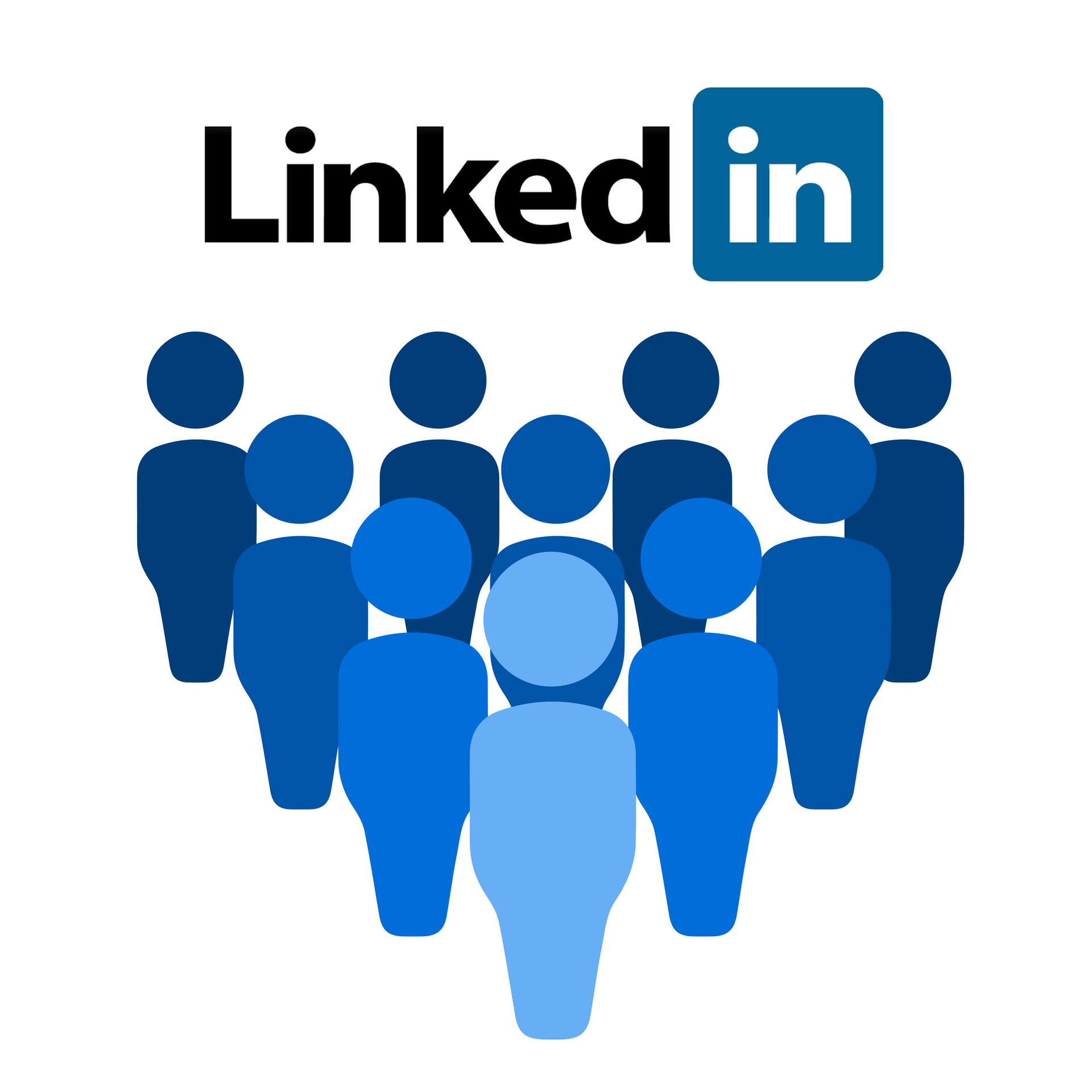

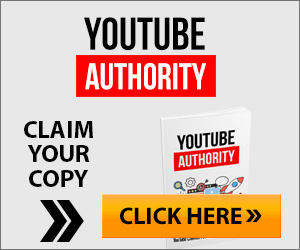
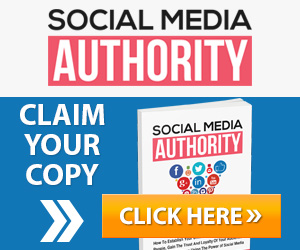
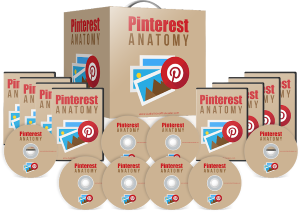
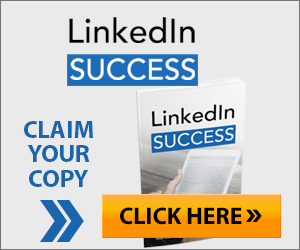
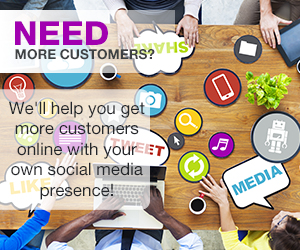
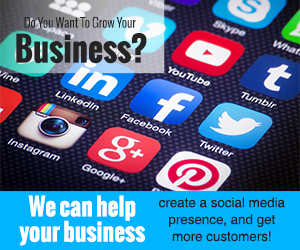
Post a Comment